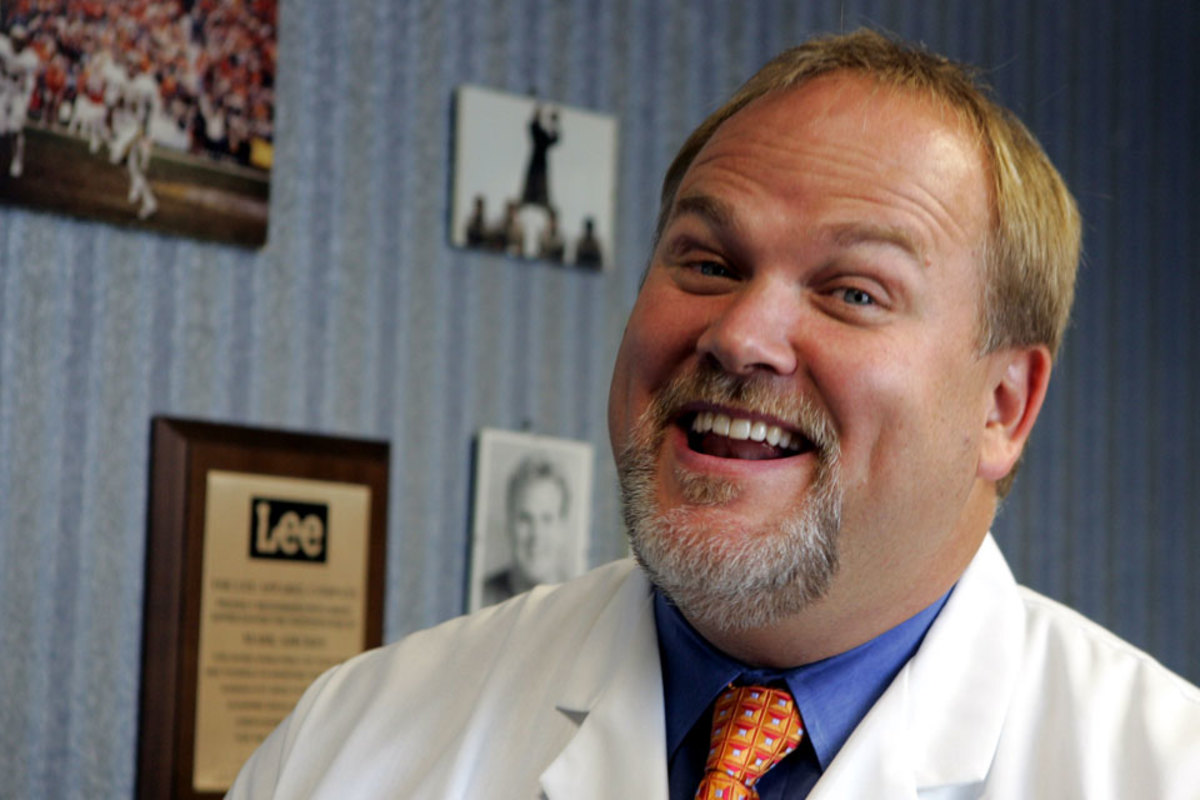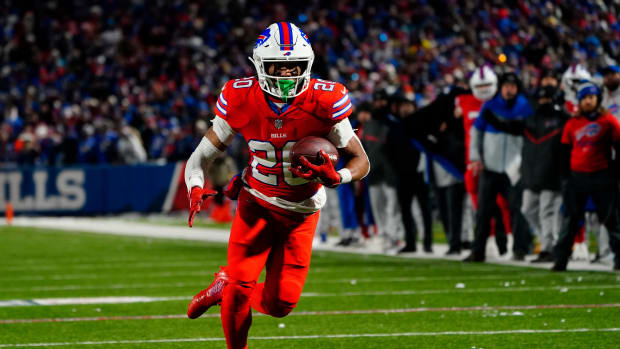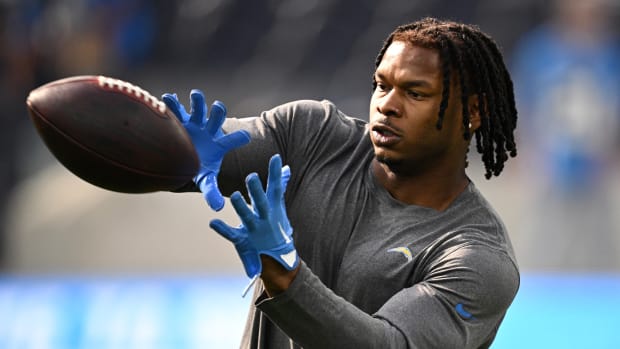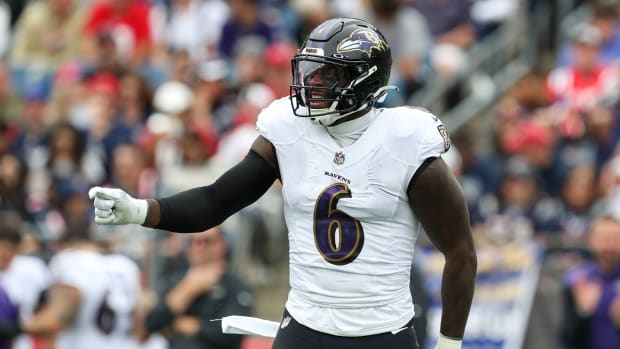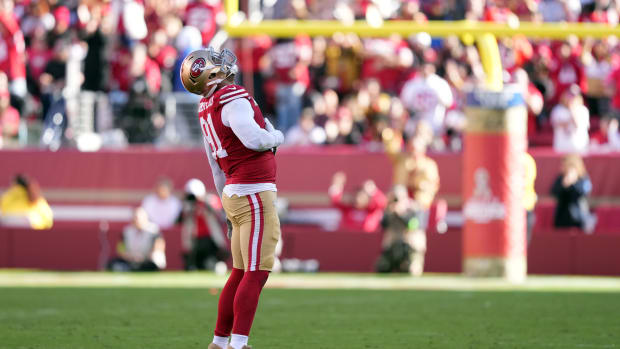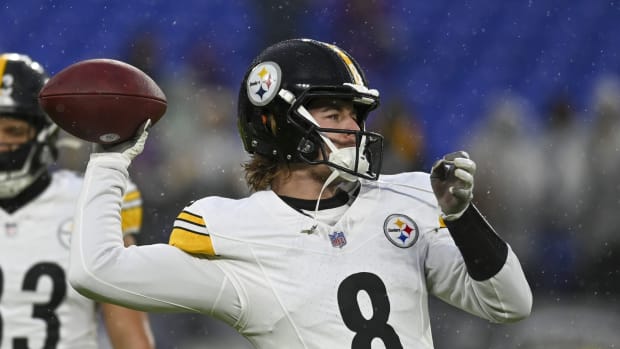From Jock to Doc
By Emily Kaplan
It was a simple pass blocking drill during training camp. Simple, that is, until Mark Adickes’ knees went numb.
In college and throughout his eight years of professional football, the 6-4, 278-pound lineman endured several injuries, including an ACL tear and a PCL tear. But this was different. This pain stemmed from his back. “The thought of paralysis or some lifelong debilitation? That just wasn’t something I wanted to explore,” Adickes says. “When I hurt my back, I knew I needed to stop playing.”
He was 31 when the Redskins placed him on injured reserve for the 1992 season, hoping to avoid surgery and contemplating what would come next. With his business degree, he could try something in sales. Or perhaps become an entrepreneur. People always said he had charisma. “I thought about broadcasting,” Adickes says. “Like most athletes.”
But Adickes wasn’t like most athletes.
“Most of us don’t stay up reading until 1 a.m. the night before games,” says Mark Schlereth, a guard who played in 156 NFL games over 12 years and was Adickes’ road roommate for two seasons in Washington. “We always knew he was special.”
Adickes, looking for a way to help others like himself, became enamored with an ambitious idea: he wanted to be an orthopedic surgeon.
He had to start from scratch.
* * *
After Robert Griffin III first tore his right ACL in 2009, he ended up on the Houston operating table of Baylor alum—and former Redskins lineman—Mark Adickes.
The son of an Army chaplain, Adickes was a military brat who was born in Germany, grew up in the sprawling plains of Central Texas and played college football at Baylor before turning pro. He was a first-round pick in the 1983 USFL draft, and played two seasons for the Los Angeles Express (blocking for quarterback Steve Young) before the Chiefs selected him in the first round of the 1984 NFL supplemental draft.
Born overseas ... grew up in Texas ... played at Baylor and wound up with the Redskins ... sound familiar? “It’s pretty crazy how similar my background is to Robert Griffin III,” Adickes, 52, says.
Perhaps that’s why Griffin, after sustaining an ACL tear in his right knee during the third game of his sophomore season, entrusted Adickes to perform the quarterback’s first reconstructive knee surgery in 2009. The procedure took place at the Ironman Sports Medicine Institute in Houston, a three-hour drive from Baylor. By then Adickes, an orthopedic surgeon and the clinic’s co-medical director, had fully graduated from jock to doc.
“For them to go to Mark for that surgery was a big deal,” says Roy Smythe, Adickes’ teammate at Baylor and a fellow doctor. “It showed he had established himself as one of the top orthopedic surgeons in the country.”
The lineman who once got dressed by picking out clothes from a pile of dirty laundry in the living room at Baylor was accepted at Harvard Medical School.
Griffin returned to the field 11 months later, won the Heisman in 2011, and well, you know where his story goes from there.
“From a credibility standpoint, there is no surgeon in the country who has Mark’s resume,” says Schlereth, who has undergone 29 operations, including 20 on his knees. “If you’re an athlete and you’re facing a really serious injury where you don’t know how it will affect your future, why would you not want to go to a guy who has been there and done that?”
Dr. James Andrews performed RG3’s most recent knee surgery, but Adickes continues to follow Griffin's career and hopes he follows through on his dream to become a lawyer after he's done playing in the NFL.
To fully to appreciate what it took for an NFL player to hang up his pads to begin a new career in medicine, which required 13 more years of schooling, you must go back to Adickes’ freshman year at Baylor. He had played football since he was in fourth grade and knew he was good at it, but never considered playing professionally until he faced Texas A&M in 1979. He was a tackle in college and was responsible for blocking Jacob Green, a defensive end who was touted as a gritty sack machine and would be taken by the Seahawks 10th overall in the following spring’s NFL draft.
“I was like hey, ‘I can block him,’ ” Adickes says. “And if I can block a first-round pick, I can definitely make it in the NFL.”
For the next three years, Adickes became singularly focused. “I majored in Division I football,” he says. “And minored in business.”
It’s not that he got bad grades. “But you know, we were typical crazy college football players,” says Smythe, a guard who roomed with Adickes at Baylor and recalls their freshman year apartment having a huge pile of dirty clothes in the living room. “We’d just grab the first thing we saw and wore it. Pretty gross.”
Inspired by the doctors who removed a malignant baseball-sized tumor from his mother’s brain when he was 6, Smythe knew his career path all along: he was accepted to medical school at Texas A&M right after Baylor. A specialist in cardiothoracic surgery and lung cancer, the 53-year-old is now a senior vice president at Scott & White Healthcare, as well as a professor of surgery at Texas A&M.
Smythe and Adickes remained close after college—Adickes was even in Smythe’s wedding—but they fell out of touch for roughly seven years, until shortly after the 1992 Super Bowl. Watching from his couch in Belton, Texas, Smythe saw Adickes run out of the tunnel with the Redskins—the last game he’d ever play. “I had no idea he was still in the league,” Smythe says. “But there he was, my old friend.”
Adickes (bottom left, 61) celebrating after the Redskins beat the Bills in Super Bowl XXVI at the Metrodome.
Smythe called the Redskins’ offices the day after Washington beat the Bills, 37-24, hoping to reconnect. The next day, Adickes called back.
“He told me about his injuries and that he thought he would hang it up soon,” Smythe recalls. “I asked what was next and he said he saved up some money and was thinking about medicine, maybe becoming a rehab technician.”
The only problem with being a rehab technician, Smythe told him, is that you’ll have doctors telling you what to do. “You’re a smart guy,” he said. “Why not just become a doctor?”
Athletes becoming doctors isn’t exactly groundbreaking. Bobby Brown became a heart surgeon after playing for the Yankees in the late 1940s and ’50s, and five-time Olympic gold medal-winning speed skater Eric Heiden is now an orthopedic surgeon. “And there have been football players who have gone on with great careers in medicine,” Adickes says “But a lot of them were on the practice squad or played a season or two. To my knowledge, there is no one in my profession that played a full career of professional football then went on for 13 more years of education to get where I am.”
It wasn’t an easy journey. Before applying to med school Adickes enrolled at George Mason to fulfill prerequisite classes, because he hadn’t taken enough science courses at Baylor. On the first day, in his first trigonometry-based physics class, he had a quiz. “And I flunked miserably,” he says. “I couldn’t even decipher the questions.”
He went to the professor’s office and explained his unique background, that he had just left the NFL two months earlier. That’s great, she told him, but you’re not going to pass the class if you don’t put in the work. So Adickes went straight to Barnes & Noble. “I literally bought the book Trigonometry for Dummies and began to study,” he says.
He did well enough on the MCATs, scoring in the 99th percentile, to be accepted at Harvard Medical School.
* * *
Treating Yao Ming as the team physician for the Houston Rockets.
Adickes has always had a nickname. In high school he was called Sasquatch because of his large stature. At Baylor he went by Hoss Cartwright because he had a big head. During his time with the Redskins, tight end Don Warren thought Adickes sounded like addict. “So once I got called into Joe Gibbs office,” Adickes says. “He wanted to know why everyone called me Druggie.” By the time he started residency at the Mayo Clinic, he was 39—seven years older than his boss—and the father of five. Everyone called him Big Daddy.
“I was a bit older and a bit more established than everyone,” says Adickes, who earned enough money playing football to cover the cost of medical school. “Though, with five kids, I was pretty broke afterward.”
With a round face and rosy cheeks, Adickes has a warm voice and high-pitch chuckle. He’s well-spoken—he hosts a regional TV show on Fox Sports Net about sports medicine called Athlete 360—but tends to ramble when discussing his second career. “I just love what I do,” Adickes says. “It’s a blast taking care of athletes. I can see myself in them. I know what they’re thinking when they walk in my office. I’ve been there, I’ve felt that. And now I can be the one to help them get back on the field.”
He’s performed surgeries on scores of athletes, including NBA center Dikembe Mutombo and MLB first baseman Lance Berkman. But Adickes feels a special connection with RG3, and not just because of their similar upbringings. “Robert has said regardless of the success that he has on the field, he wants to become an attorney,” Adickes says. “I think he’ll find it harder than he thinks because a lot of people will want him to do something else, but I hope he keeps with that dream.”
Griffin has a role model to look up to. “Plus, he’s already a step ahead of me,” Adickes says. “Robert earned a graduate degree while at Baylor.”
So he won’t have to start from scratch.
More on ACL Injuries
Stevie Brown’s ACL Surgery: 63 Minutes to a New Knee
Can a Soccer Doctor Save NFL Players' Knees?
The Business of Getting Better—and the Best: Why Team Doctors Are Being Used Less and Less
































